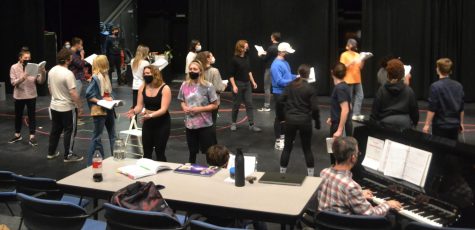Game on: Kent State’s video game major at an all-time high
October 26, 2016
Turan Koptur started as a Kent State undergraduate student in 2007 with a passion for video games.
Koptur, now a lecturer of engineering technology at Kent State’s Tuscarawas Campus, grew up playing games on the Atari and Commodore 64. The more he played, the more he became fascinated by the mechanics behind the games.
When Koptur enrolled at Kent State, he chose computer design, animation and game design (CDAGD) as his major. With that major, he learned how to design and produce video games.
“I was always fascinated how companies that created games and how the models are done — just the whole inside detail, which is the background things that no one sees,” said Koptur, who became a full-time faculty member in 2015. “I just wanted to learn and know how these things were done.”
Recently, the CDAGD major has seen a spike in freshman enrollment. Pamela Schram, an adviser for the CDAGD major, said 2015 had 15 freshmen entering the field, while 2016 brought in 42 new majors.
“The reason (this major) is so inviting, I think, is because it’s strictly game design and the animation for it,” Schram said. “There’s other departments that have game programming and another department that has just animation, but we’re the ones that have the designing of the game and the animation.”
Koptur said first and second-year students learn about how 2-D art and 3-D modeling works. Students also learn about the importance of textures, and how to create a 3-D environment with computer coding and software.
The major uses software such as JavaScript, C# Program, Blueprints Visual Scripting and C++. In junior and senior-level courses, students learn coding to animate their games. Students also design and animate playable games that other CAD majors try out on multiplayer platforms.
“We have a requirement where students need to learn JavaScript or C# coding,” Koptur said. “These two codings are pretty essential for making games.”
Koptur said he sometimes provides codes for students to use. Once the students understand the codes, they can make changes to customize it. For example, changing the speeds of the characters.
While Koptur said the ultimate goal is for graduates to land jobs at video game production companies such as Blizzard Entertainment, Nintendo, Valve and Electronic Arts, there are other opportunities for CDAGD graduates as well.
For example, Koptur said, a graduate could be hired by a fire department to create an animated scenario for educational purposes. Graduates can go on to work in movie animation, commercials or graphic design.
“I truly believe this is the coolest major on campus,” Schram said. “The program is growing, and the opportunities are there.”
CAD recently underwent changes to update the curriculum and get students ready for today’s booming industry. With fast-moving technological advances like the new virtual reality software — including the HTC Vive and Oculus Rift — Koptur said he and his coworkers believed the coursework needed some revision.
“(The CDAGD faculty) worked so hard, and I also brought my input in to see what we need to change and what we need to do, in order to make sure that this major is industry-level ready,” Koptur said. “The updates that we did, we pretty much changed everything in terms of lectures and adding new courses, to help students to find a job, when it comes to character creations.”
If a major doesn’t update their curriculum, Koptur said it is unlikely that major will continue to thrive. However, thanks to the recent revisions proposed by the CAD faculty and Schram’s high school visits to campaign for the program, enrollment has significantly increased.
“If we can’t make it industry-level ready then we can’t get students to our major, and it will eventually die if we don’t update things along the way,” Koptur said.
The CDAGD major is available for in-person lectures at Kent State’s Tuscarawas Campus and main campus. Schram said the major originated out of Tuscarawas about eight years ago, when Kamal Bichara, former director of the Kent State Tuscarawas engineering technology program and an emeritus professor of technology, saw a need for the major and created the coursework.
This year, with the growth of the program, in-class lectures have been offered at the Stark Campus. Previously, students at regional campuses —other than Tuscarawas who wanted to pursue the major — would have to enroll in video conference courses.
“In the future and as it grows, we will need more faculty,” Koptur said. “It seems like we’re growing pretty quickly within just one and a half years … We all worked together so hard to make those changes in order to grow.”
Samantha Ickes is a features correspondent, contact her at [email protected].

























